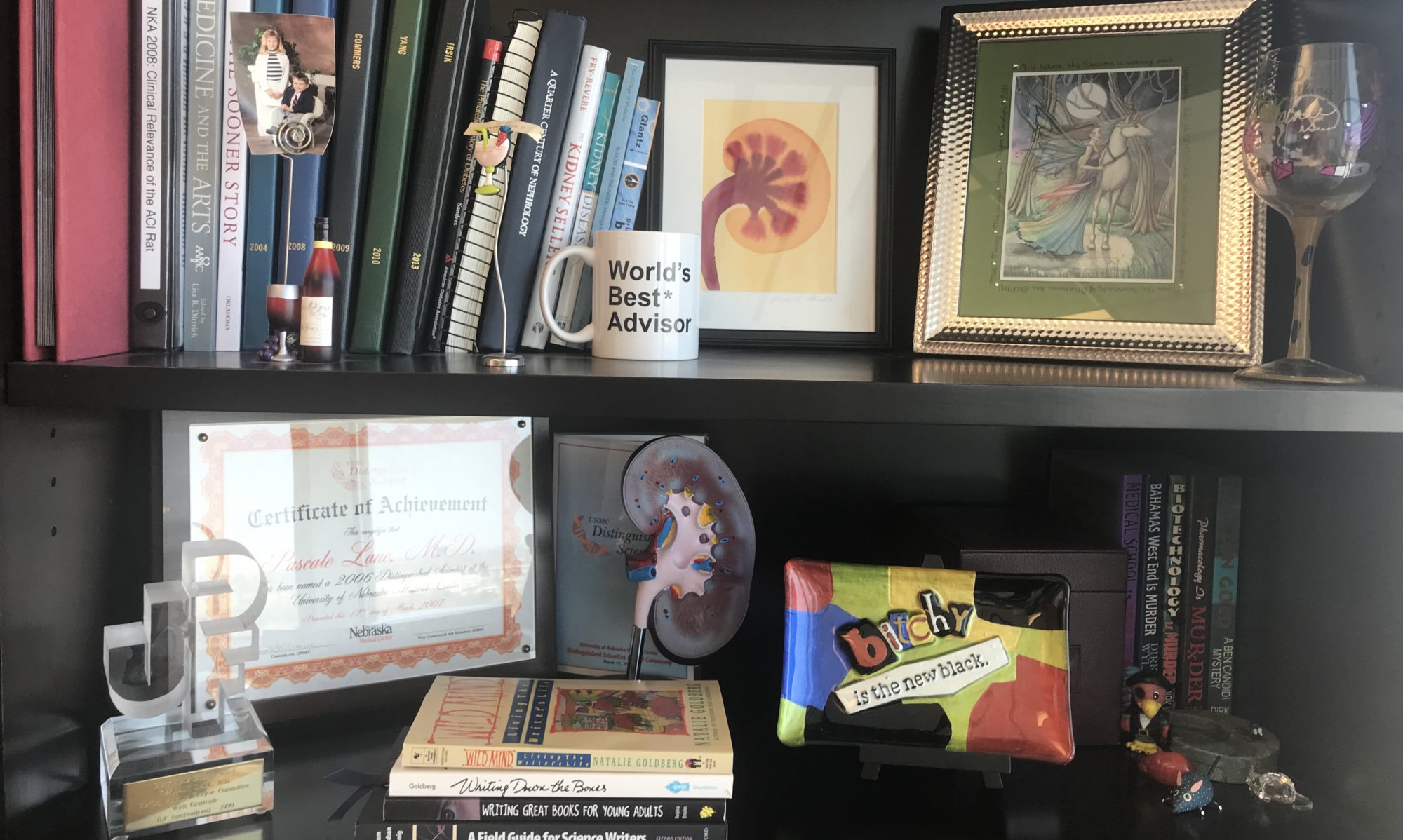 This year the Renal Section Young Investigator Award goes to a favorite of mine, and not just because her work has let me create a great image of the kidney. Jennifer Pluznick, now an Associate Professor at Johns Hopkins, began her journey in physiology as a doctoral student at University of Nebraska while I was there. While a post-doctoral fellow at Yale, she began exploring G-protein-coupled-receptors (GCPRs) in the kidney, especially those previously involved with smell, and her lab now explores their role in kidney function. Her lab logo is pretty cool; I’ll wait while you take a look.
This year the Renal Section Young Investigator Award goes to a favorite of mine, and not just because her work has let me create a great image of the kidney. Jennifer Pluznick, now an Associate Professor at Johns Hopkins, began her journey in physiology as a doctoral student at University of Nebraska while I was there. While a post-doctoral fellow at Yale, she began exploring G-protein-coupled-receptors (GCPRs) in the kidney, especially those previously involved with smell, and her lab now explores their role in kidney function. Her lab logo is pretty cool; I’ll wait while you take a look.
 Olfactory receptors constitute the largest gene family with 350 members in humans and approximately 1000 members in rodents. So far, 18 of these olfactory receptors have been located in the kidney with an additional 11 taste-associated GCPRs and 76 without known ligands. She first studied olfactory receptor 78 (Olfr78), an interesting chemosensor that localizes to the afferent arteriole, a major site of control for blood pressure and kidney function. It’s ligands (activators) include short-chain fatty acids such as acetate and proprionate, molecules derived primarily from our gut microbiota. Proprionate has been shown to cause the release of renin via its interactions with Olfr78.
Olfactory receptors constitute the largest gene family with 350 members in humans and approximately 1000 members in rodents. So far, 18 of these olfactory receptors have been located in the kidney with an additional 11 taste-associated GCPRs and 76 without known ligands. She first studied olfactory receptor 78 (Olfr78), an interesting chemosensor that localizes to the afferent arteriole, a major site of control for blood pressure and kidney function. It’s ligands (activators) include short-chain fatty acids such as acetate and proprionate, molecules derived primarily from our gut microbiota. Proprionate has been shown to cause the release of renin via its interactions with Olfr78.
Changes in gut microbiota have been associated with changes in blood pressure, so her lab wanted to explore changes in the metabolites that might occur with hypertension. They implanted micro pumps into conventional mice and into germ-free mice (mice in a plastic bubble) and infused them with angiotensin II, an established model of hypertension. Germ-free mice showed no changes (no microbiome, no metabolites), but of more than 800 substances studied, 13 were unregulated with angiotensin II infusion. Some are uremic toxins and many are known to lower blood pressure; perhaps our microbiome is trying to help us out when our kidneys fail or our blood pressures otherwise get elevated. After all, our death would not be particularly helpful for the bacteria residing in our gut. Also interesting were some sex-specific changes identified. The meaning of these differences should provide fertile ground for further study.
As expected, Dr. Pluznick delivered an excellent presentation of her impressive work. If you aren’t here, you missed a great talk. You can still catch her on the TED stage:



